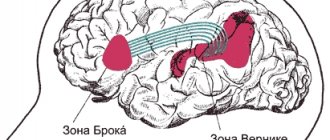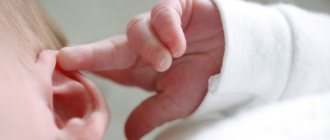Production of sounds
Today, the structure of the speech apparatus can safely be considered 100% studied. Thanks to this, we have the opportunity to find out how sound is born and what causes speech disorders.
Sounds are generated due to the contraction of muscle tissue of the peripheral speech apparatus. When starting a conversation, a person automatically inhales air. From the lungs, air flows into the larynx, nerve impulses cause vibration of the vocal cords, and they, in turn, create sounds. Sounds form words. Words - into sentences. And suggestions - into intimate conversations.
The structure of the speech apparatus
The speech apparatus, or, as it is also called, the voice apparatus, has two sections: central and peripheral (executive). The first consists of the brain and its cortex, subcortical nodes, pathways, brainstem nuclei and nerves. The peripheral one, in turn, is represented by a set of executive organs of speech. It includes: bones, muscles, ligaments, cartilage and nerves. Thanks to the nerves, the listed organs receive tasks.
Stages of speech formation
The respiratory section of the vocal apparatus is responsible for supplying air, the vocal apparatus forms the voice, and the function of the articulatory apparatus is to create the resonance necessary for distinct sound and volume. Pronouncing a word consists of several stages. First, commands are selected in the cerebral cortex, that is, a specific articulatory program is formed. Subsequent stages:
- Implementation of the prepared program in the executive department of the vocal apparatus. The respiratory organs and resonator system take part. They help pronounce certain phonemes.
- To avoid errors during pronunciation, kinesthetic control is necessary, which allows you to make corrections before the phoneme is pronounced.
- At the moment the sound is heard, auditory control is carried out, allowing a person to understand the mistake made and correct it.
The pathways form the conduction section. Nerve pathways are divided into two types: centrifugal (transmit information from the central nervous system to the muscles, ligaments and tendons) and centripetal (information moves in the opposite direction - from the muscles, tendons and ligaments to the central nervous system). In the second case, the paths are also called sensitive.
Central department
Like other manifestations of the nervous system, speech occurs through reflexes, which, in turn, are connected to the brain. The most important parts of the brain responsible for speech reproduction are: the frontal lobe, the temporal part, the parietal and occipital regions. In right-handed people, this role is played by the right hemisphere, and in left-handed people, the left hemisphere plays this role.
The frontal (inferior) gyri are responsible for the production of spoken language. The convolutions located in the temporal zone perceive all sound stimuli, that is, they are responsible for hearing. The process of understanding heard sounds occurs in the parietal region of the cerebral cortex. Well, the occipital part is responsible for the function of visual perception of written speech. If we take a closer look at the child’s speech apparatus, we will notice that his occipital part is especially actively developing. Thanks to it, the child visually records the articulation of his elders, which leads to the development of his oral speech.
The brain interacts with the peripheral region through centripetal and centrifugal pathways. The latter send brain signals to the organs of the speech apparatus. Well, the first ones are responsible for delivering the response signal.
The peripheral speech apparatus consists of three more sections. Let's look at each of them.
Definition and purpose
In science, the speech apparatus is usually understood as a set of human organs intended for the formation of speech. The central section, represented by the brain and individual formations of the central nervous system, performs a regulatory function. Main destination:
- To form oral speech, the frontal gyrus of Broca's area is necessary, which forms the motor area.
- People perceive the speech of their interlocutor thanks to the speech-auditory area, which includes the temporal gyrus of Wernicke's center.
- The parietal lobe is responsible for understanding.
- The assimilation of words during the perception of written speech (when reading or writing) occurs thanks to the visual zone located in the occipital lobe.
In addition, the diagram of the human speech apparatus includes the peripheral or executive department, which consists of nerves, bones and muscles.
Respiratory section
We all know that breathing is the most important physiological process. A person breathes reflexively, without thinking about it. The breathing process is regulated by special centers of the nervous system. It consists of three stages, continuously following each other: inhalation, short pause, exhalation.
Speech is always formed on the exhale. Therefore, the air flow created by a person during a conversation performs articulatory and voice-forming functions simultaneously. If this principle is violated in any way, speech is immediately distorted. This is why many speakers pay attention to speech breathing.
The respiratory organs of the speech apparatus are represented by the lungs, bronchi, intercostal muscles and diaphragm. The diaphragm is an elastic muscle that, when relaxed, has a dome shape. When it contracts together with the intercostal muscles, the chest increases in volume and inhalation occurs. Accordingly, when you relax, exhale.
Voice department
We continue to consider the sections of the speech apparatus. So, the voice has three main characteristics: strength, timbre and height. Vibration of the vocal cords causes the flow of air from the lungs to become vibrations of small air particles. These pulsations, transmitted to the environment, create the sound of the voice.
The strength of the voice mainly depends on the amplitude of vibration of the vocal cords, which is regulated by the strength of the air flow.
Timbre can be called sound coloring. It is different for all people and depends on the shape of the vibrator that creates vibrations of the ligaments.
As for the pitch of the voice, it is determined by the degree of tension of the vocal folds. That is, it depends on how much influence the air flow can have on them.
Features of the executive department
It includes three major structural divisions. The first is the respiratory section. Its activity, which is a sequence of inputs, exhalations and pauses between them, is regulated by the central nervous system. The main working “tool” is the diaphragm, which expands and contracts, due to which the lungs change volume and produce inhalations and exhalations. In this case, an air stream is formed, which is important for the formation of the voice; the clarity of the pronunciation of speech sounds depends on its intensity. In addition, the respiratory department includes:
- rib cage;
- lungs;
- intercostal muscles.
The functions of the air stream are voice-forming and articulatory. The sound is formed when you exhale, and the inhalation when speaking becomes deeper and shorter. The number of respiratory movements performed during speech is much greater than directly during physiological breathing. The volume of air inhaled and exhaled during conversations is three times greater than during normal inhalations and exhalations.
Voice education
In the structure and functioning of the speech apparatus, the vocal section plays the most important role; it is responsible for the formation of the voice and its characteristics - timbre, strength, pitch. It includes the larynx and vocal cords, which, vibrating under the influence of an air stream, produce sounds.
The larynx is a tube consisting of soft tissues and cartilage; in its upper part it passes into the pharynx, in the lower part into the trachea. In the place where the larynx connects to the pharynx, the epiglottis is located, which serves as a kind of valve when swallowing: by descending, it prevents pieces of food and saliva from entering it. Organ Features:
- The larynx in men is larger, the vocal cords are longer (up to 2-2.4 cm). In women, the length of the ligaments is 1.8-2 cm.
- The size of the organ in children before puberty is the same, regardless of gender.
- The larynx grows unevenly throughout a person's life. There are periods of active growth in size: 5-7 years, 12-13 (girls) and 13-15 (boys). The latter develop an Adam's apple.
- Changes shape: in children it is in the form of a funnel, in adults it is cylindrical.
The power of the air environment determines the strength of the sound, and the pitch and timbre of the voice depend on the size of the ligaments, their elasticity and degree of tension.
In addition, resonators, which include the pharynx, oral and nasal cavities, also influence the specificity. They change their volume, that is, they resonate, due to which the sounds acquire strength and overtone coloring.
Making sounds
The articulatory department, which includes the tongue and lips, jaws, alveoli, and palate (hard and soft), is responsible for this important process. In science there is a classification of them into active (moving) and passive (stationary). The first group includes the tongue, lips, soft palate and lower jaw; all others belong to the passive category. The profile of the articulatory apparatus will help you visualize what they look like.
The most important organ of the speech apparatus is the tongue, which takes part in the formation of almost all speech sounds with the exception of labial ones. During articulation, the organs move closer to each other, and closures or slits are formed, which causes the formation of a voice.
The extension tube contains resonators, which are responsible for the clarity and volume of speech. This tube has a specific structure that allows it to change shape and volume. It has two main functions - a noise vibrator and a resonator. The first can be performed by the vocal cords, the gaps between the lips, as well as between the tongue and the hard palate, the tongue and lips, the tongue and alveoli, lips and teeth. Features of the formation of various sounds:
- The noise vibrator is involved in the formation of voiceless consonants.
- The tone vibrator allows you to pronounce sonorant and voiced phonemes.
- The nasal cavity takes part in the formation of m, n and their soft variants.
These are the basic structural components of speech and language.
Active organs
As the name suggests, these organs can be mobile and are directly involved in the formation of the voice. They are represented by the tongue, lips, soft palate and lower jaw. Since these organs are made up of muscle fibers, they can be trained.
When the speech organs change their position, constrictions and closures appear in various parts of the sound-pronouncing apparatus. This leads to the formation of a sound of one or another nature.
A person's soft palate and lower jaw can move up and down. With this movement they open or close the passage into the nasal cavity. The lower jaw is responsible for the formation of stressed vowels, namely the sounds: “A”, “O”, “U”, “I”, “Y”, “E”.
The main organ of articulation is the tongue. Thanks to the abundance of muscles, he is extremely mobile. The tongue can: shorten and lengthen, become narrower and wider, be flat and curved.
Human lips, being a mobile formation, take an active part in the formation of words and sounds. The lips change their shape and size to enable the pronunciation of vowel sounds.
The soft palate, or, as it is also called, the velum palatine, is a continuation of the hard palate and lies at the top of the oral cavity. It, like the lower jaw, can move down and up, separating the pharynx from the nasopharynx. The soft palate originates behind the alveoli, near the upper teeth and ends with a small tongue. When a person pronounces any sounds other than “M” and “N”, the velum of the palate rises. If for some reason it is lowered or motionless, the sound comes out “nasal”. The voice comes out nasal. The reason for this is simple - when the palatine curtain is lowered, sound waves along with air enter the nasopharynx.
Speech organs and their mechanisms
Generated by the needs of social life, our speech is carried out by an extremely complex anatomical and physiological apparatus, consisting of central and peripheral speech organs . The central organ consists of the brain, mainly the cortex of its cerebral hemispheres. The peripheral organs include the organs of hearing, breathing, voice, and articulation. Inextricably linked and interacting under the leading regulatory influence of the central nervous system, all speech organs represent a complex functional system in which each of them plays its own specific role. Violation of one of them affects the activities of the others.
The central organ of speech and its mechanisms
The cerebral cortex, in turn, is a complex functional system of interacting various analyzers (auditory, motor, visual, etc.). The cortex carries out the physiological basis of speech - the second signaling system, inextricably linked and interacting with the first signaling system.
I.P. Pavlov, by the second signaling system, meant not only speech as a means of communication, but associated it with the ability to generalize, abstract, with “specially human higher thinking.” Consequently, the cortex is the central organ of speech that regulates others. This is proven by the possibility in some cases, with a healthy brain, to learn to speak without hearing and voice, to write without hands: the brain can adapt other organs for speech. The brain acts holistically in any act, as a single functional system. Therefore, speech is the result of the holistic work of the entire brain.
In the cortex, under the influence of speech stimuli from the environment and depending on the state of the nerve cells at any given moment, temporary nerve connections can be formed in any part of it. As a result of processing the latter by higher analysis and synthesis associated with certain structures (constructions) of the brain, conditioned second-signal (speech) reflexes arise. The localization of speech functions of the cortex is not only very complex, but also variable, which is why it was named I.P. Pavlov dynamic localization. Speech reflexes are acquired by a child individually through life experience, arise as a result of the simultaneous complex activity of auditory, visual, motor, kinesthetic, skin and vibration analyzers and are expressed in the form of speech sounds, syllables, words and phrases. As a result of long-term repeated influences in the same sequence of a certain group of speech stimuli, a relatively stable complex of conditioned reflexes (sounds, words, phrases) is formed in the brain, which is resumed when the complex stimulus is repeated, in whole or in part. Such a complex is carried out by the corresponding temporary connection of nerve cells, forming continuously changing “constellations”. This coherent, balanced system of internal processes by I.P. Pavlov calls it a dynamic stereotype. Human stereotypes are qualitatively more complex than animal stereotypes. They are the result of both the specific patterns of the second signaling system and its effects on the first signaling system.
Peripheral speech organs
The executive devices of sound speech, the activity of which is regulated by the brain, are: 1) the organs of hearing that perceive and control speech, and partly of vision; 2) sound-producing organs: respiratory muscles of the abdomen and chest, diaphragm, lungs, larynx, soft palate with uvula, oral and nasal cavities, tongue, teeth and lips (Fig. 1).
In pronunciation, an important role is played by the sense of movement of the organs that produce sound (especially the tongue), and to some extent, touch. The more often and better these organs work, the more the brain itself develops under the influence of the stimuli coming from them and controls them more accurately.
Particularly noteworthy is the extraordinary role of hearing in auditory speech: a child deprived of hearing from an early age, without special training, cannot imitate the speech of adults and therefore remains mute, but for communication uses a primitive means - gesture and facial expressions. What kind of peripheral speech organs does a person have?
1. Breathing apparatus (Fig. 1 and 2). a) Lungs, which are like bellows, filled with air and consisting of individual elastic communicating vesicles (alveoli). The lungs supply the larynx, mouth and nose with a stream of air necessary for sound pronunciation. b) The chest, to the walls of which the lungs are tightly adjacent. By contracting the strong external intercostal muscles, it expands and stretches the lungs (during inhalation); due to the heaviness of its walls, the elasticity of the lungs, and partly the contraction of the weaker internal intercostal muscles, it collapses and compresses the lungs (during exhalation). c) The diaphragm is a powerful flat muscle that separates the chest cavity from the abdominal cavity. When contracting, it becomes denser and, falling down, frees up space for the lungs and thereby increases their capacity (inhalation); sticking out with two domes upward and pressing on the bases of the lungs, displaces air from them (exhalation). d) The abdominal muscles, when contracting, press on the intestines and through it on the diaphragm - promote exhalation; protruding forward during intense inhalation, they facilitate the lowering of the diaphragm during inhalation.
Breathing carried out by movements of the chest is called thoracic; produced with the help of the diaphragm and abdominal muscles - diaphragmatic, or abdominal. Children use a combined thoraco-abdominal type of breathing, which is most beneficial for speech and healthy (as it is the easiest, most economical, smoothest and richest in the amount of exhaled air). Some children experience upper thoracic or clavicular breathing (with it, the shoulders are raised, and the air enters mainly the tops of the lungs). This type of breathing is harmful to health, and children should be weaned from it.
Inhalation requires much more effort than exhalation, during which the chest collapses under the influence of its own gravity, and the lungs themselves tend to contract. This must be remembered during all kinds of games and exercises for developing breathing.
2. Larynx (Fig. 3, 4, 5). This vocal apparatus is a small box consisting of a whole system of large and small cartilages, movably articulated with one another and driven by a system of muscles. Its main part is the vocal cords - two elastic muscle folds that protrude in the form of rollers from the inner walls of the thyroid cartilages. In front, the cartilages converge at an acute angle (Adam's apple). At the back, the ligaments are attached to two movable cartilages, which, converging and diverging, sometimes push them apart, sometimes close them (the glottis opens and closes). In addition, the vocal cords, contracting, can themselves move closer to one another. Other muscles of the larynx are also involved in the movement of the ligaments.
During normal breathing, the glottis is open and air passes through it freely. This is how the voice is formed. A stream of air coming from the lungs encounters the closed vocal cords and with force, in small jolts, breaks through between them.
Rice. 3. Internal view of the anterior part of the larynx. 1 - thyroid cartilage; 2 - cricoid cartilage; 3 - epiglottis; 4 - section of the hyoid bone; 5 - trachea; 6 - blinking ventricle; 7 - false vocal cord; 8 - true vocal cord.
Under air pressure, the ligaments rhythmically oscillate (vibrate) - a musical sound is obtained, which is called the primary tone. These vibrations in turn cause vibrations in all cavities communicating with the laryngeal cavity (subglottic and supraglottic space - pharynx, mouth, nose, etc.). And in them the main tone for each speech sound and additional tones (overtones) are formed, which, merging with the main tone, form the sound of the human voice that we hear. The action of the larynx is similar to the action of a reed organ pipe (Fig. 5): the reeds, under the influence of a stream of air and springs, quickly and rhythmically close and open, resulting in a sound.
The stronger the air pressure on the vocal cords (the resulting large range of vibrations), the larger the resonating cavities, the stronger the voice. The pitch of the voice depends on the number of vibrations of the vocal cords per second. The larger the larynx, the longer the vocal cords and, therefore, the less vibration, and therefore the lower the pitch of the voice. Children have shorter vocal cords than adults, so children's voices are higher than adults' voices.
Depending on the ratio of the time of the exhalation stream of air and the rapprochement of the vocal cords, three types of voice formation, or attack (attack, vocal beginning) are distinguished: hard, soft and aspirated.
A hard attack is more often observed when negative emotions (anger, malice, irritation) are expressed in the voice. A hard attack occurs because the air approaches the vocal cords at the moment when they have time to tensely come together. When air breaks through them, a sharp, strained beginning of a voice is heard, for example: “Oh, how painful!” or irritably: “Olya, sit on the chair.” Screaming and speaking tensely, irritably, and swearing is harmful to the voice. A mild attack is formed by the gradual rapprochement of the ligaments already at the moment of air passage - a pleasant, soft voice is heard. For example: “Oh, what a beautiful flower!”, “Olya, kiss me.”
Rice. 4. Top view of the larynx: glottis a - open glottis during breathing; b - when a voice sounds; c - when whispering; g - with falsetto.
An aspirated attack is caused by the passage of air before the vocal cords begin to approach each other, so a slight exhalation is heard before the voice, like the German sound p.
3. Extension pipe (Fig. 1, 6). It consists of a number of different cavities (pharynx, nasopharynx, nose, mouth) and organs of articulation (soft palate, hard palate, tongue, teeth, jaws, lips) associated with the larynx and located above it. The extension pipe gives the sound a certain color (timbre) and shape.
Rice. 6. Oral cavity: 1 - soft palate; 2 - tongue; 3 - palatine tonsils; 4 - tongue; 5 - palatopharyngeal arches; 6 - palatine-lingual arches; 7 - posterior wall of the pharynx; 8 - hard palate.
a) The pharynx is a wide canal from the base of the skull to the esophagus, its part in front of the palate is called the nasopharynx; The space between the soft palate and the root of the tongue is called the pharynx. These cavities, being the expanded end of the respiratory tube, facilitate inhalation: air passes through the pharynx into the mouth, through two openings (choanae) into the nose and into the tympanic cavity of the ear (from the pharynx through the Eustachian tube). b) The soft palate is a muscular continuation of the hard palate, ending in a uvula. If necessary, straining, it rises upward and, pressing together with the tongue against the back wall of the throat, closes the air passage into the nose. c) The hard palate is a bony dome-shaped arch that enhances the sound of the voice. d) Teeth and jaws strengthen the voice and clarify (especially the incisors) the pronunciation of sounds. With normal jaws and teeth, the upper teeth somewhat overlap (capture) the lower teeth, tightly closing with them. It is impossible to push the lower jaw forward when making the sounds ы, Ж, ч, Ш, щ, which is observed in practice. e) Lips, giving various shapes to the mouth opening, thereby modify sounds. f) The tongue is the main organ of sound production. It is a complex complex of many muscles located and acting in different directions and directly connected with other organs of pronunciation. Thanks to its great flexibility and mobility, changing its position and shape, it changes the oral cavity in various ways, forming a narrowing in it, then closing with different parts of it, and to a certain extent affects the function of the vocal and respiratory organs. As a result of such plasticity of the language, a rich complex of various speech sounds is created. g) The nose is a rather large cavity, divided by a longitudinal plate (vomer) into two chambers, which amplifies the voice and gives it a special timbre when the vocal respiratory stream passes through the nose. 4. Ear (Fig. 7)
Rice. 7. Structure of the ear: 1 - external auditory canal; 2 - eardrum; 3 - middle ear cavity; 4 - hammer; 5 - anvil; 6 - stirrup, resting on the oval membranous window; 7 - semicircular canals; 8 - vestibule; 9 and 10 - snail; 11 — round window; 12 - Eustachian tube; 13 — bone in section.
The organ of hearing, the ear, consists of three sections: external, middle and internal. The sound wave reaches the eardrum through the ear canal and causes it to vibrate, which is transmitted to the movably articulated auditory ossicles (hammer, incus and stapes) located in the middle ear. The middle ear is filled with air that enters it from the mouth through the Eustachian tube. Vibrations of the auditory bone chain, which at the other end is attached to the elastic membrane separating the middle ear from the inner ear, together with air vibrations are transmitted to the inner ear, filled with a special liquid. In the inner ear, in addition to the apparatus for maintaining balance (the semicircular canals), there is the auditory cochlear apparatus, which houses the very thin and complex organ of Corti. It contains special auditory cells with hairs connected to the auditory nerve. The vibrations propagated through the liquid irritate the hairs of the auditory cells. These irritations are transmitted along the auditory nerve to the brain, where we are aware of them as speech sounds.
Khvattsev I. Yu.
Need a consultation with a neurologist? Sign up by phone or through the feedback form in the “Contacts” section.
Speech apparatus disorder
Now that we know what the human vocal apparatus consists of and how it works, let's consider the main problems that may affect it. Problems with the pronunciation of words, as a rule, arise from the immaturity of the speech apparatus. When certain parts of the articulation department become ill, this affects the correct resonance and clarity of sound pronunciation. Therefore, it is important that the organs that are involved in the formation of speech are healthy and work in full harmony.
The speech apparatus can be impaired for various reasons, since it is a rather complex mechanism of our body. However, among them there are problems that occur most often:
- Defects in the structure of organs and tissues.
- Incorrect use of the speech apparatus.
- Disorders of the corresponding parts of the central nervous system.
If you have problems with speech, do not put them off for a long time. And the reason here is not only that speech is the most important factor in the formation of human relationships. Typically, people who have impaired speech apparatus not only speak poorly, but also experience difficulties in breathing, chewing food and other processes. Therefore, by eliminating the lack of speech, you can get rid of a number of problems.
Implementation of speech function
Two centers are responsible for the sound of speech: sensory and motor speech. The first helps to perceive phonemes and distinguish them from each other, while the second is necessary for reproducing sounds, words and sentences. In psychology, it is customary to distinguish two types of speech:
- impressive, that is, understanding someone else’s oral and written speech;
- expressive, pronounced out loud with a certain intonation, rhythm, tempo.
It is interesting that a healthy infant in the first year of his life can reproduce up to 75 shortest sounds, that is, at the physiological level he is capable of learning any language in the world. In the future, everything depends on what language is spoken in his family.
To learn to speak competently, every person must understand what subsystems there are in the Russian language. These include:
- Phonetics. The science of speech sounds - phonemes, the rules of their articulation from the perspective of physiology.
- Semantics. Helps to understand the meaning of each lexical item.
- Syntax. Allows you to understand how sentences are formed from individual words.
- Vocabulary. Studying the vocabulary richness of the language.
Speech sounds in Russian are divided into consonants (they are noises) and vowels (tones). The former are divided into voiceless and voiced, hard and soft, and the latter into stressed and unstressed. These signs are usually called semantically distinctive. There are 42 phonemes in the Russian language, of which 36 are consonants and 6 are vowels.
Preparing the speech organs for work
In order for your speech to be beautiful and relaxed, you need to take care of it. This usually takes place in preparation for public speaking, when any stumble or mistake can cost your reputation. The speech organs are prepared for work in order to activate (adjust) the main muscle fibers. Namely, the muscles that are involved in speech breathing, the resonators that are responsible for the sonority of the voice, and the active organs that are responsible for the intelligible pronunciation of sounds.
The first thing to remember is that a person’s speech apparatus functions better with correct posture. This is a simple but important principle. To make your speech clearer, you need to keep your head straight and your back straight. The shoulders should be relaxed and the shoulder blades should be slightly squeezed. Now nothing stops you from saying beautiful words. By getting used to correct posture, you can not only take care of clear speech, but also gain a more advantageous appearance.
For those who speak a lot due to their occupation, it is important to learn to relax the organs responsible for the quality of speech and restore their full functionality. Relaxation of the speech apparatus is ensured by performing special exercises. It is recommended to do them immediately after a long conversation, when the vocal organs are very tired.
Possible problems
The structure of the voice apparatus, as well as the functional features of each of its departments, will help you work out what problems may arise. In speech therapy, it is customary to distinguish several types of disorders:
- Incorrect use of speech organs.
- Violation of the structure of organs or tissues.
- Problems with the parts of the nervous system whose function is to ensure the pronunciation of phonemes.
In addition, children may experience delayed speech development (SDD), the essence of which is the inability to pronounce certain sounds, the inability to express emotions, and lack of control over intonation. Also included in the developmental developmental disorder are underdeveloped vocabulary, the absence of phrasal speech in 2-year-olds, and the absence of coherent speech in 3-year-olds. These defects should be eliminated as soon as possible by contacting speech therapists, otherwise they may cause the child to be unable to learn to write and read normally.
The vocal apparatus is the most important part of the human body; it helps people communicate with each other and find their place in society. For this reason, any problem detected in early childhood must be addressed immediately.
Relaxation pose
You may have already come across such concepts as posture and relaxation mask. These two exercises are aimed at relaxing muscles or, as they also say, relieving muscle tension. In fact, they are not anything complicated. So, to take a relaxation pose, you need to sit on a chair and bend slightly forward, bowing your head. In this case, the legs should stand with their entire feet and form a right angle with each other. They should also bend at right angles. This can be achieved by selecting a suitable chair. The arms hang down, resting the forearms lightly on the hips. Now you need to close your eyes and relax as much as possible.
To ensure that rest and relaxation are as complete as possible, you can engage in some forms of auto-training. At first glance, it seems that this is the pose of a dejected person, but in fact it is quite effective for relaxing the entire body, including the speech apparatus.
Relaxation mask
This simple technique is also very important for speakers and those who, due to the specific nature of their work, talk a lot. There is nothing complicated here either. The essence of the exercise is to alternately tense various facial muscles. You need to “put on” different “masks”: joy, surprise, melancholy, anger, and so on. Having done all this, you need to relax your muscles. It's not difficult to do this at all. Simply make the sound “T” as you exhale gently and leave your jaw in a loose, lowered position.
Relaxation is one of the elements of hygiene of the speech apparatus. In addition to this, this concept includes protection from colds and hypothermia, avoidance of irritants to the mucous membrane and speech training.










